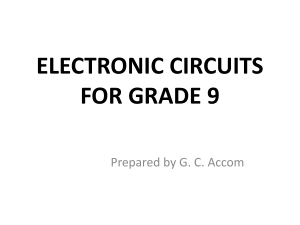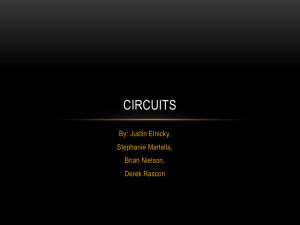Diode :- Clamper
advertisement
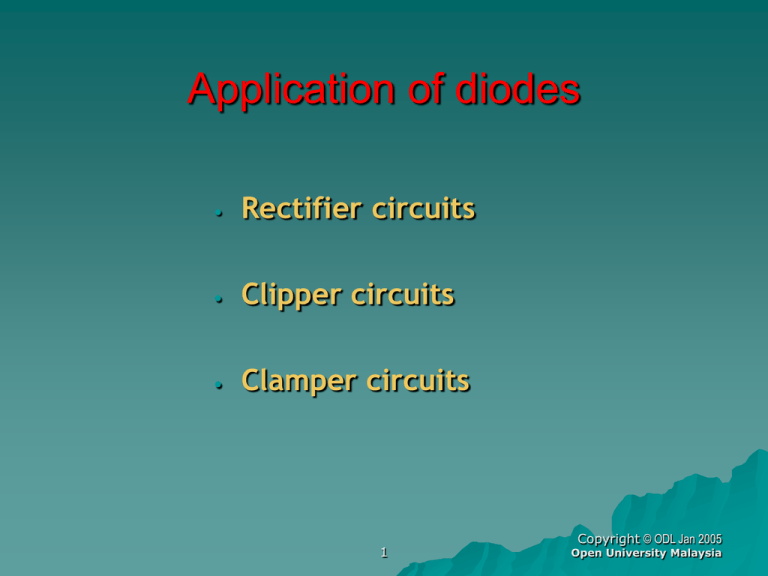
Application of diodes • Rectifier circuits • Clipper circuits • Clamper circuits 1 Copyright © ODL Jan 2005 Open University Malaysia Rectifier circuits Circuits that convert an ac signal into a dc signal Two types: Half-wave rectifier & Fullwave rectifier 2 Copyright © ODL Jan 2005 Open University Malaysia Half-wave rectifier 3 Copyright © ODL Jan 2005 Open University Malaysia Half-wave rectifier 4 Copyright © ODL Jan 2005 Open University Malaysia Full-wave rectifier 5 Copyright © ODL Jan 2005 Open University Malaysia Full-wave rectifier 6 Copyright © ODL Jan 2005 Open University Malaysia Clipper Circuit • Clipper circuits have the ability to ‘clip’ off a portion of the input signal without distorting the remaining part of the alternating waveform. 9 Copyright © ODL Jan 2005 Open University Malaysia LP3 10 Clamper Circuit Clamper Circuit • The clamping network ‘clamp’ a signal to different dc level without altering the wave-shape. • The network will have a capacitor, a diode and a resistive element. • The magnitude of R and C must be chosen such that the time constant t = RC is large enough to ensure that the voltage across the capacitor does not discharge significantly during the interval the diode is nonconducting • Used in TV receivers as a DC restorer 12 Copyright © ODL Jan 2005 Open University Malaysia Diode :- Clamper Positive Clamper The circuit for a positive clamper is shown in the figure. During the negative half cycle of the input signal, the diode conducts and acts like a short circuit. The output voltage Vo 0 volts . The capacitor is charged to the peak value of input voltage Vm. and it behaves like a battery. During the positive half of the input signal, the diode does not conduct and acts as an open circuit. Hence the output voltage Vo Vm+ Vm This gives a positively clamped voltage. Vo Vm+ Vm = 2 Vm Diode :- Clamper Positive Clamper Diode :- Clamper Negative Clamper During the positive half cycle the diode conducts and acts like a short circuit. The capacitor charges to peak value of input voltage Vm. During this interval the output Vo which is taken across the short circuit will be zero During the negative half cycle, the diode is open. The output voltage can be found by applying KVL. Diode :- Clamper Negative Clamper Diode :- Clamper Biased Clamper Diode :- Clamper The circuit of a positively biased clamper is shown in the figure. During the negative half cycle of the input signal the diode is forward biased and acts like a short circuit. The capacitor charges to Vi + Vs . Applying the KVL to the input side During the positive half cycle of the input signal, the diode is reverse biased and it acts as an open circuit. Hence Vs has no effect on Vo. Applying KVL around the outside loop. How Does A Clamp Circuit Work? •In the positive half cycle C gets charged through D to 10V (peak of sine wave + 5 V) with the straight plate of C at a higher potential. D Clips the output to a maximum of -5V. •In the negative half cycle D is reverse biased. The output can reach a minimum of –15V (-VC + negative peak of sine wave). LP3 19
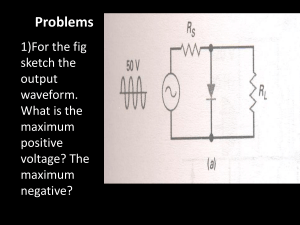
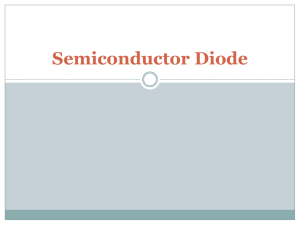



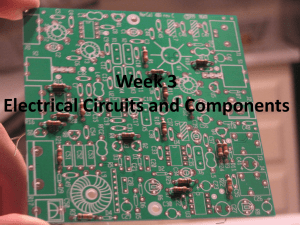
![Sample_hold[1]](http://s2.studylib.net/store/data/005360237_1-66a09447be9ffd6ace4f3f67c2fef5c7-300x300.png)

